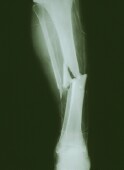
MONDAY, Jan. 19, 2015 (HealthDay News) — For American seniors, a fall can have disabling or even fatal consequences. And a new study finds that the rate of older people who suffer a fall is actually on the rise.
A research team led by Dr. Christine Cigolle, of the University of Michigan Medical School in Ann Arbor, tracked national data from adults aged 65 and older. They found that the number of older adults with at least one self-reported fall in the past two years rose from about 28 percent in 1998 to about 36 percent in 2010.
“Contrary to our hypothesis, we observed an increase in fall prevalence among older adults that exceeds what would be expected owing to the increasing age of the population,” the researchers said.
According to Cigolle’s team, falling remains the most common cause of injury among older Americans, and it’s believed that about one-third of seniors will suffer a fall each year.
Two experts stressed that there are ways seniors can lower their odds for a tumble, however.
“Interactive educational programs that teach senior citizens how to strengthen their muscles and retain their balance are important to help this population improve their balance and strength and, thus, decrease their risk of falls,” said Grace Rowan, a registered nurse and leader of the falls prevention program at Winthrop-University Hospital in Mineola, N.Y.
Dr. Matthew Hepinstall works at the Center for Joint Preservation & Reconstruction at Lenox Hill Hospital in New York City. He said that, “as an orthopaedic surgeon, I encounter the results of falls on a nearly daily basis.”
Many injuries heal or can be surgically repaired, Hepinstall said, but “these injuries can have devastating effects on quality of life, including hospitalization, surgery and often nursing home stays. Many patients do not regain their prior level of function and independence, and those who do are often plagued by apprehension about future falls.”
He said that there are many ways to help prevent falls in the home, including:
- elimination of throw-rugs,
- keeping the path to the bathroom well-lit at night,
- avoiding medications that cause light-headedness or disorientation,
- maintaining good nutrition and hydration,
- engaging in exercise programs that boost muscle mass and balance.
Hepinstall stressed that any “changes in medication and exercise regimen should be discussed with a doctor.” And he added that “not all falls are preventable, and medical management of osteoporosis can reduce fracture risk.”
The findings were published online Jan. 19 in JAMA Internal Medicine.
More information
The U.S. National Institute on Aging has more about falls and older adults.
Copyright © 2025 HealthDay. All rights reserved.

